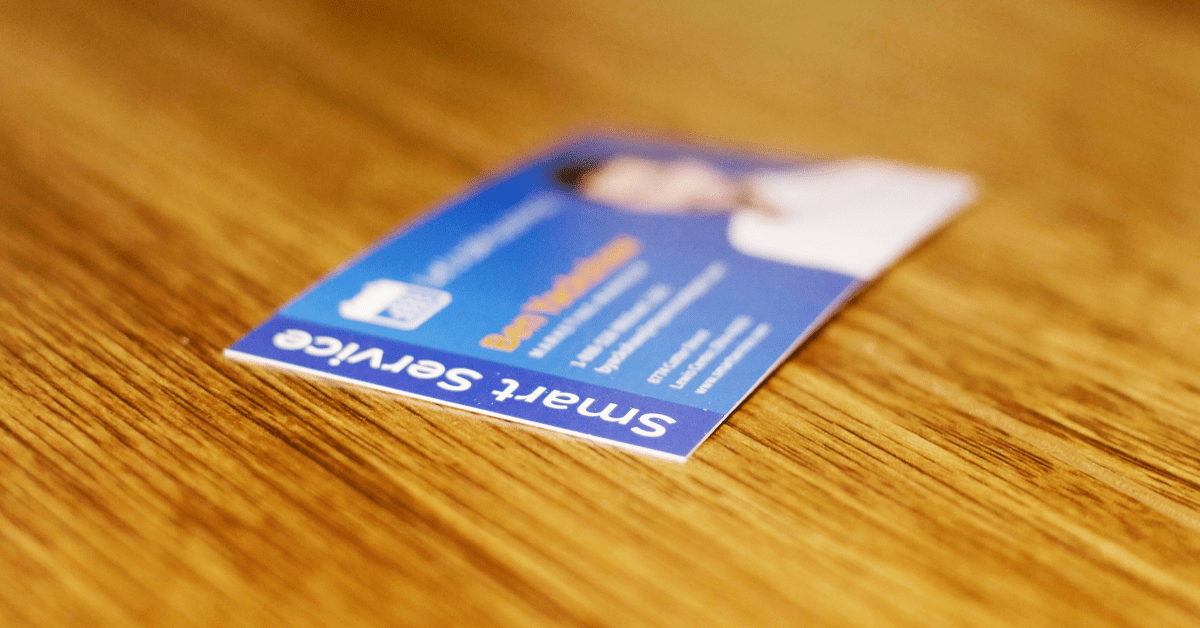HVAC Business Cards: Where to Get Them and What to Include
By Randy Breneman on Tuesday, June 9, 2020Get HVAC business cards that represent the strength and professionalism of your business.
If you want to run a professional, profitable HVAC operation, you need to provide A-plus service and project a professional appearance. Good business cards are an essential part of branding your HVAC business. They help you communicate with customers, sell your services, network, and so much more.
Your business card needs to represent you when you aren’t around. What message do you want to leave a potential customers? Create a business card that sells on your behalf.
What should you include on an HVAC business card? What design features will get you more calls for service? Follow these HVAC-specific best practices to create a professional business card that gets results.
Five Best Practices for Better HVAC Business Cards
1. Include the right information.
The content of your card should be the most important consideration. Font, paper quality, and colors don’t matter if your business card supplies the wrong information. After all, if you don’t put your phone number on the card, it won’t matter how professional your design; people won’t call you.
Always list your information in this order on an HVAC business card:
- Logo
- Company name
- Your full name
- Your job title
- Contact information, like your website, email, and phone number
You might find yourself tempted to add your services and specialties, but that adds too much clutter on a tiny card. Remember, if folks have questions, they can check out your website or call you for more information.
Proofread everything! Contact information is the most important part of your business card. You don’t want to accidentally type the wrong phone number.
2. Use a consistent style.
Next, consider the design and overall tone of your card. You want a business card that matches your website. Don’t choose a templated HVAC business card online; do the work and make your card match your existing brand.
Why? Customers want consistency. The tone of your card should match every other aspect of your business. Don’t slap a zebra on your card because it looks cool and you like zebras. Stay professional and maintain consistency.
Keep your business card design clean and simple. You don’t want a design that looks too busy, so use no more than 2-3 colors. Blue, gray, and white are classic colors that conventionally convey trustworthiness. Many HVAC companies choose red and blue as key colors, as these evoke heat and cold.
3. Choose the right paper.
After designing your card, you’ll select your paper size and weight. As far as paper size, choose the standard horizontal business card. Don’t get your card in the shape of a pineapple or anything crazy; you’ll stick out for the wrong reasons. If you want to look a little different, opt for a card with rounded edges.
Business cards are often a customer’s first impression of your business’ brand. When you use a thicker, high-quality card, customers take note. In fact, they often hang onto nice business cards and dispose of cheap, flimsy ones.
Invest a little more money so you can get thicker, nicer cards that leave a good impression. Opt for a matte texture if possible. Glossy business cards look nice, but you can’t write on them easily with a pen.
4. Watch your font choices.
Customers shouldn’t have trouble reading the text on your business card. Never use hard-to-read fonts, like cursive or symbols. Limit extraneous information on the business card so you can increase the font size of your most essential data. Don’t use a 9-point font that no one can read!
Choose a font that’s both easy to read and consistent with your business. For example, try sans serif fonts like Arial or Helvetica.
5. Get a little creative.
You don’t need zany colors or weird card shapes to be creative. Add interesting, valuable features to your business card and you’ll get plenty of customers talking. These might include:
- Adding a coupon or loyalty stamp to the back.
- Instructions on how to leave an online review.
- Space on the back for notes or appointment reminders.
- A QR code directing customers to your website, social media, or scheduling tool.
- Built-in magnets so your card can stick to the fridge.
- A calendar template for service date reminders.
As long as the creative feature adds value, go for it.
The Bottom Line
Whether you’re networking, following up with a customer, or promoting yourself door to door, your HVAC business card should represent your business in the best possible light.
You don’t need graphic design chops to build a great business card, either. Sites like MOO, Vistaprint, and UPrinting have great options that work for HVAC professionals. When in doubt, you can always hire a contract graphic designer (you can even do this online with a service like UpWork) to create the perfect business card for your HVAC operation.


